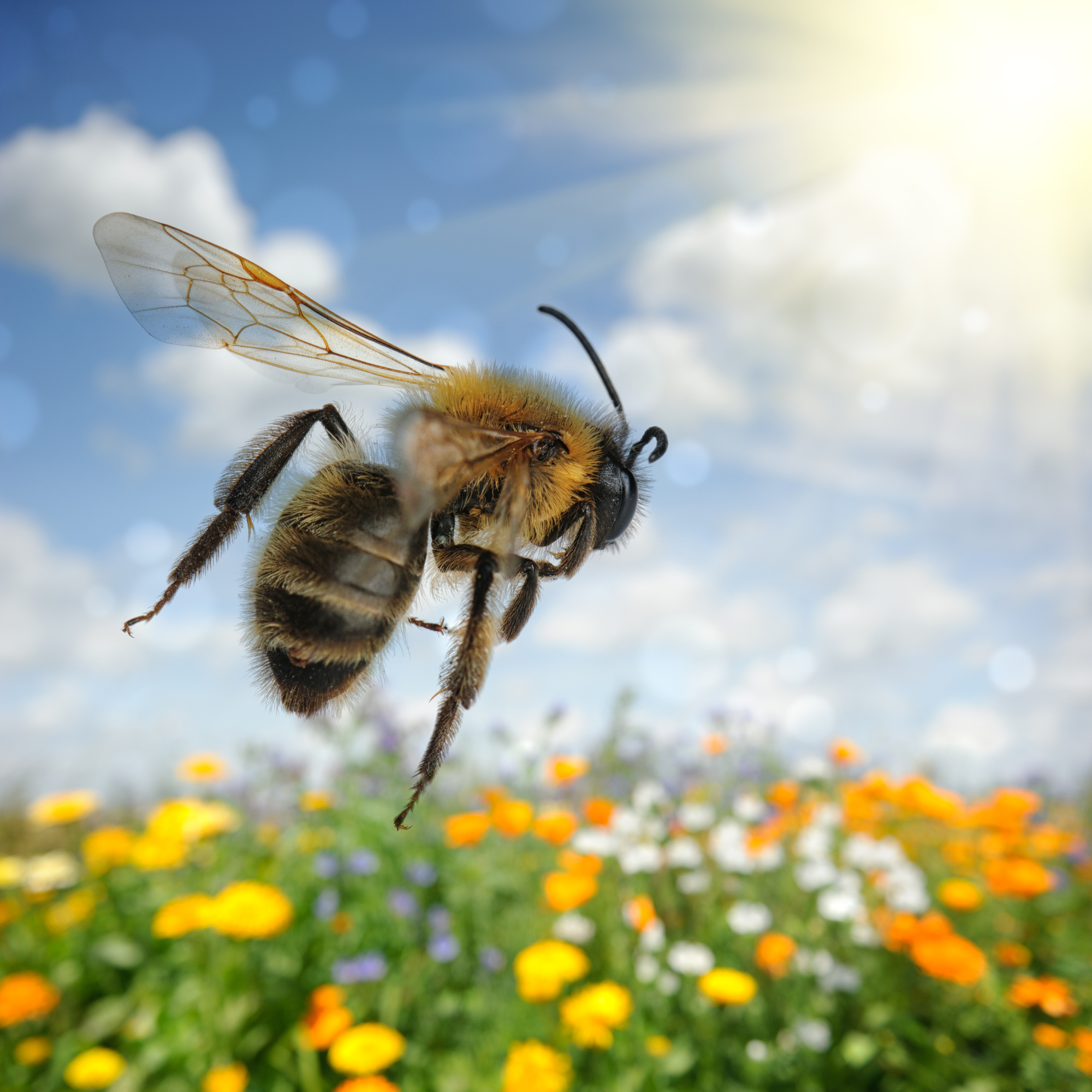Most garden or nature lovers know that bees play a vital role in our ecosystem. However, their presence can be unwelcomed at times for those with small children, pets, or a bee allergy.
A lot of people have a real or imagined bee allergy. For these people, reaching out for an insecticide and getting rid of pesky bees is a quick solution to avoid bee stings.
While insecticides are an effective way of getting rid of bees, focusing on their good side can be the determinant between using synthetic commercial repellents and natural bee repellents.
Natural bee repellents are environmentally safe commercial or homemade products made with plant-based natural ingredients like essential oils. Because they are not made with toxic and harsh chemicals, they are safe for humans and pets as well as the bees they are used against.
But why is it important to use natural deterrents and avoid killing the bees?
According to the Food and Agriculture Organization (FAO), bees are the most important pollinating insects, which is the main reason we should not destroy or kill bees. Their role in pollination greatly defines the ecological relationships and contributes to the stability and conservation of the ecosystem.
Thanks to pollinators like honey bees, carpenter bees, ground bees, and yellow jackets, we can enjoy many plants and food crop variations, floral diversity, and sustained evolution and survival of the green vegetation.
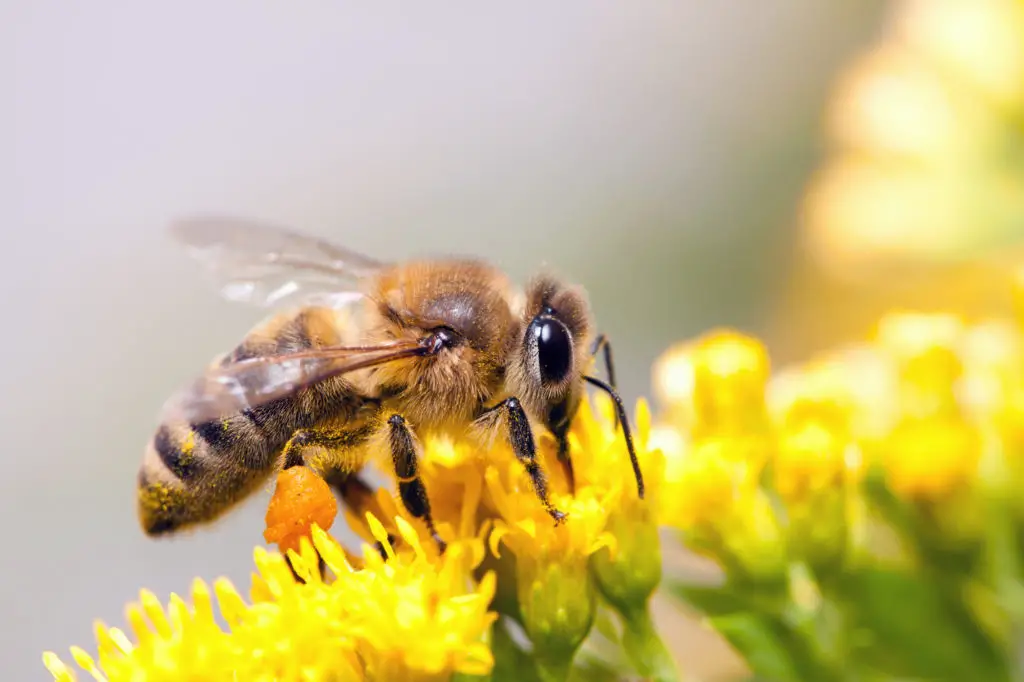
But not every climate will have a bee buzzing around you or nesting somewhere in your home or yard. Honey bees, for example, will remain closed in their hives in winter, consuming stored honey and generating warmth from the movement of busy colony members.
In summer, bee infestation and swarming are likely. This may require you to use some type of bee repellent, and we advocate you go for natural ways to deter but not kill bees.
Table of Contents
Natural Ways of Getting Rid of Bees
Your best bet when it comes to unwanted pests and pesky bees is to keep them at bay in the first place. This can be done in one of these preventative or remedial methods:
Plan Your Yard Landscaping
Research the best bee-deterring plants and avoid planting sweet-scented flowers close to your home. Many homeowners may not consider that these are a main attraction for nectar-seeking bees.
Sweat-scented flowers can make bees, wasps, and other insects inhabit your home as a favorable nesting location.
According to an article by Jen Hayes, a member of Oregon State University Horticulture Department and Garden Ecology Lab, some floral patterns are also attracting visual cues for a bee; those with darker colors in the center and those whose blooms have bright colors like white, blue, yellow, and ultra-violet.
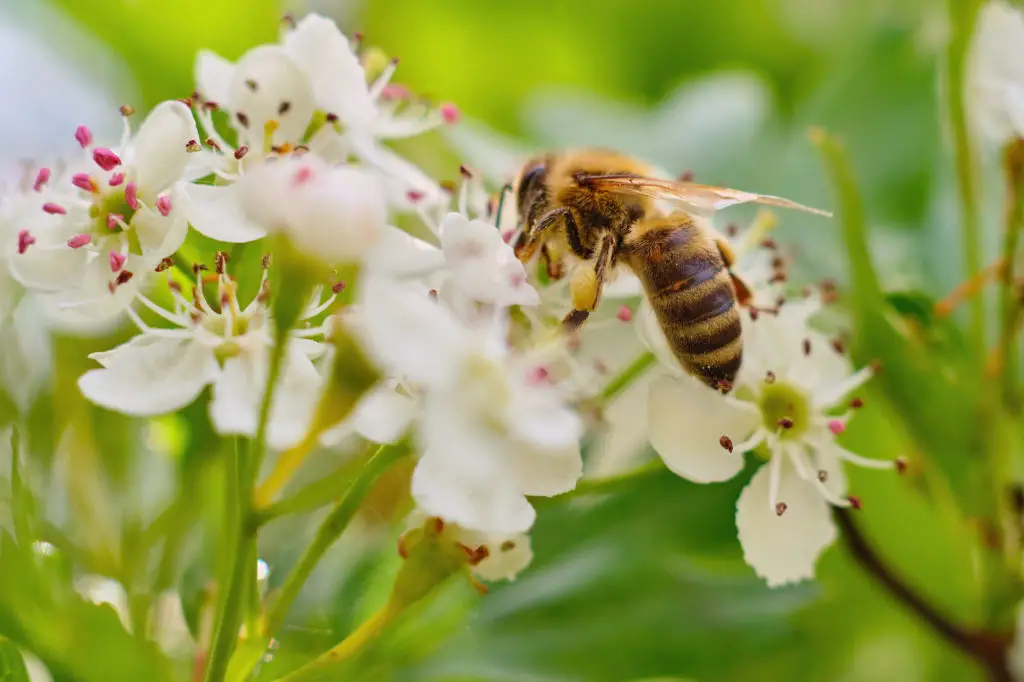
Provide Bees with Alternative Food
When you plan outdoor summer barbecues or parties, provide alternative bee food (like a bowl of ketchup), especially if plants aren’t flowering as is the case in fall. A honey bee won’t consume human food unless its main source of food is unavailable.
Choose your Body Scents
Sweet-scented soaps, deodorants, sprays, and other flowery and strong sweet smells are a ready attraction for a hovering bee and other insects. Avoid them.
Wear Light-colored Clothing
Experts in beekeeping have suggested that bees get aggressive in the dark or towards dark colors. You should avoid dark-colored clothing and wear light-colored ones if you are trying to deter bees.
Completely Remove Previous Bee Nests
Remains of previous bee hives or nests have traces of pheromone scent (a chemical cue released by a bee to interact with others).
As a result, they can attract a new swam to rebuild the nest. Completely remove the honeycomb from old bee nests in buildings or wooden structures in your yard.
Grow Bee-deterring Plants
Just as bees will be attracted to sweet-smelling flowers, they will likewise be repelled by certain plant scents.
Neem, Eucalyptus, Cloves, Citronella, Geraniums (especially red ones), Marigold and Peppermint plants are among those that will keep your compound bee-free. You can plant these in your flower garden or pots.
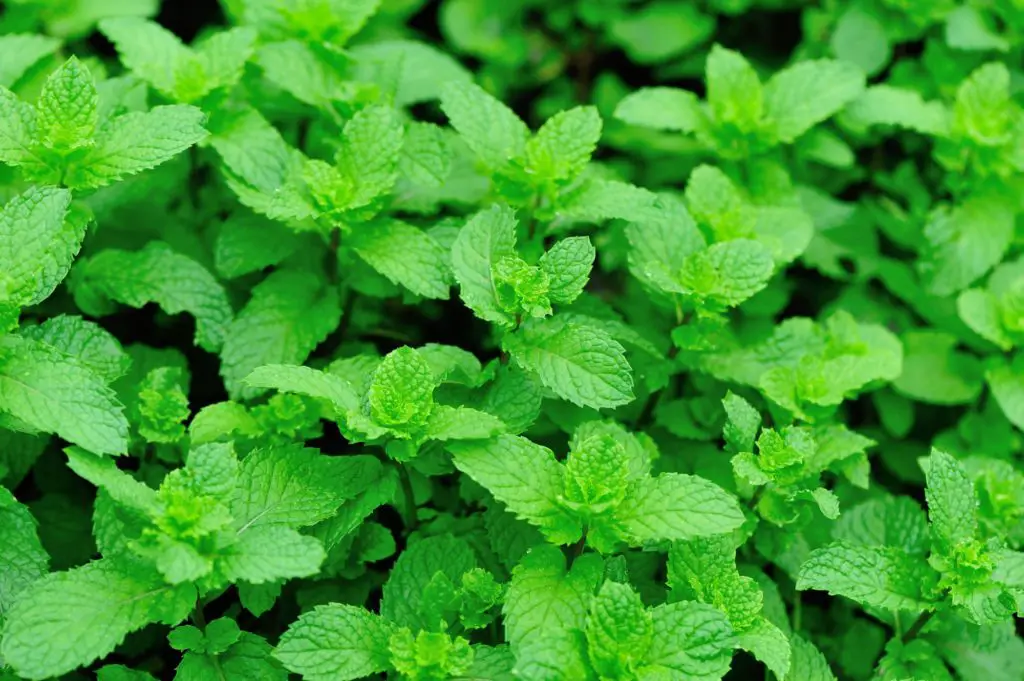
If bees are already humming around or nested in or outside your home, then we recommend you go for one of these natural methods to move them.
Smoke the Bees
Smoking is considered an excellent method for repelling bees because they associate it with a forest on fire and will relocate to be safe.
Simply use semi-dry wood or cardboard to build a smoky fire under the nest or, if at a distance, ensure the nest is in the direction of the wind so smoke can be blown towards it.
Relocate the Hive/Swarm
Relocating bees is also a natural way of getting rid of them from your home or compound. However, this is best done by a pest control professional or someone with experience in keeping bees.
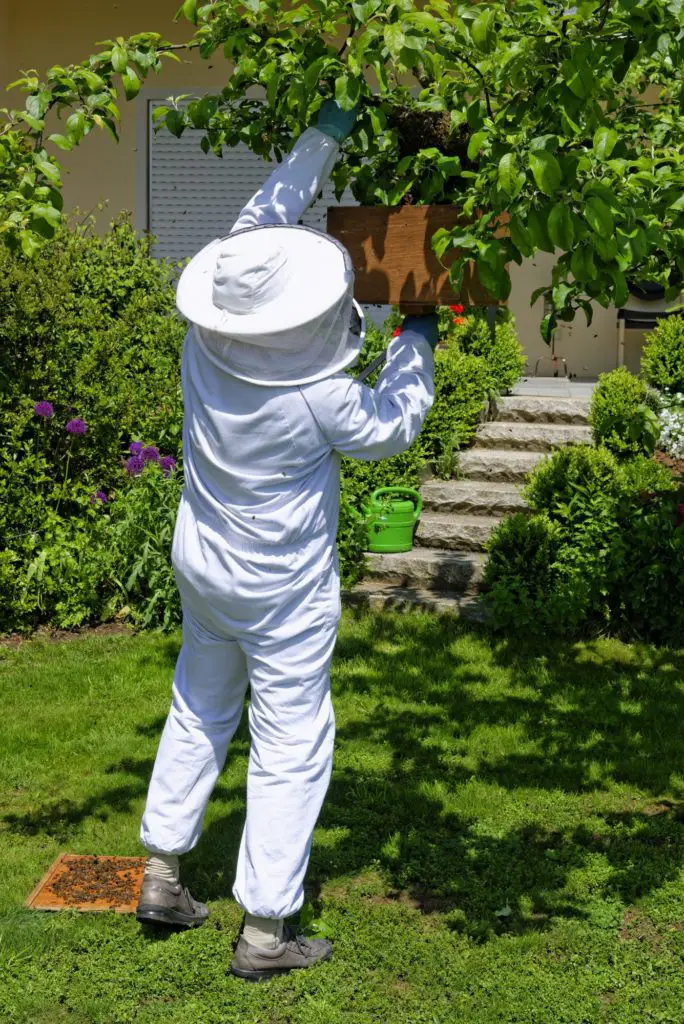
Some counties may have regulations about whether you can move bees from a building or compound and when it’s compulsory to call a pest control company.
Use Commercial Natural Bee Sprays
There are commercial pest-repellent sprays that are made from organic ingredients and are, therefore, non-toxic natural products safe for b
ees. A good example is Fischer’s Bee Quick Bee Repellent. This product can be ordered from Amazon. It is made from a blend of sweet-smelling herbal extracts and natural oils.
Do not spray directly on the insects. Instead, buy a breeze or fume board and apply the spray on it, then leave it close to the nest or hive where bees live. The strong smell will cause them to move out and leave.
Commercial natural repellents can be substituted with homemade repellents.
Home Made Bee Repellents
Insecticides are the traditional way of ridding your home of pests like bed bugs and flying insects. While these are highly effective, the toxic chemicals used to make them are harmful to humans, animals, and the environment. Besides, they can also get rid of beneficial insects.
Natural homemade repellents are a more friendly option to deter or send away bees from your living space without killing them. These homemade remedies have scents that are repulsive to bees and other pests but harmless to humans and pets.
Here are some of the natural repellents you can use at home and a description of how to use them.
Cucumber Peels
Cucumbers contain cucurbitacin, which bees find repulsive. To use cucumber peels as a bee repellent, spread the peels on door and window frames or around your home and compound. These work best in smaller spaces.
Alternatively, you can arrange the peels of fresh cucumber in a single layer in an aluminum pie dish. When combined, aluminum and cucumbers produce an odor that’s appalling for bees, making them leave your compound.
Peppermint
Planting Peppermint around your home perimeter or mixing peppermint oil with other scents like Cayenne smells will keep bees away.
For example, you can make a bee-deterring spray with Peppermint oil, Cinnamon, and Cayenne pepper by mixing 2-3 teaspoons of liquid soap, a few drops of peppermint oil, a 1/8 spoon of cinnamon, and a 1/8 spoon of cayenne pepper with water. Use a spray bottle to spread the mixture around your home and on patios, lawn chairs, doors, windows, and other areas of the compound.
Cinnamon
Cinnamon is another smell that acts as a bee repellent. You can use cinnamon sticks or powder to deter bees by spreading them in areas of the compound where your love spending time and around doors and windows.
Witch Hazel
Though you’ll find a bee sucking nectar from Witch Hazel and carrying its heavy pollen, this scented flower is an effective repellent when mixed with others scents.
Mix 6 tablespoons of witch hazel, 10 drops of Tea tree oil, and 10 drops of peppermint essential oil in a spray bottle to make a strong spray for deterring bees.
Soap Solution
A soap mixture is a cheap and easy-to-make pest-repelling home remedy. Put water in a spray bottle and add liquid soap to make a soapy mixture.
You can add more or less soap depending on how strong you want the mixture to be. Spray the mixture on plants, flowers, around the home, and near bee nests. A soapy mixture is more effective at night.
Garlic Powder
Bees do not only dislike garlic smell but they can also be poisoned by it. A study in 2015 found that garlic extracts highly intoxicated not only bees but also their larvae and reduced walking activity in adult bee workers.
Other plant-based homemade bee repellents include:
- Clove oil
- Citronella candles
- Eucalyptus oil
- Geranium oil
- Rosemary oil
- Cedarwood oil
- Vanilla extract
- Organic baby powder
Natural Bee Repellent FAQs
What scent keeps bees away?
Peppermint oil, Citronella, Lavender, Garlic, Cinnamon, Eucalyptus, Cedarwood, Clove, Rosemary, and Geranium all have natural scents that are appalling for bees and so keep them away. They can be used as repellents in their natural form or as essential oils.
How do you repel bees naturally?
You can naturally repel bees by smoking them, growing bee-deterring plants like Marigold and Citronella, avoiding body deodorants and sprays with a sweet smell, completely removing old bee nests or hives, and using a bee-deterring essential oil.
Is vinegar a bee repellent?
Vinegar is a natural repellent that’s most effective when you have a small bee population hovering over your flower bed or buzzing over sweet-scented garden flowers. Mix equal amounts of distilled vinegar and water to make a natural spray and sprinkle it on bee-attracting flowers, empty bird nests or bird feeders, and on foliage in your yard.
What scent repels bees and wasps?
Both bees and wasps particularly hate the peppermint smell. Lemongrass, Geraniums, Cloves, Bay leaves, Eucalyptus, and Tea tree scents are also natural bee and wasp repellents.

